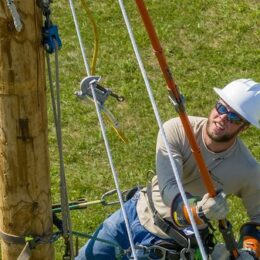Electronic and mobile devices, TVs, computers and gaming stations have become ubiquitous fixtures in our homes, particularly those with children. Consumer electronics (coupled with the proliferation of smart home appliances, technology and electric vehicles) have slowly, but steadily, changed our homes and lifestyles.
This ever-connected world is the modern environment in which children are growing up. And with lifestyles increasingly reliant on technology and, in turn, energy consumption, teaching youngsters to save energy is an important life lesson — one that we could all be reminded of.
The why
Before parents can teach their children how to save energy, they must first answer the question, “What’s in it for me?” As most parents can attest, convincing kids to care about energy efficiency is a hard sell. Parents need to explain why it’s important to save energy and how it benefits the child — otherwise they will not understand the need to change their habits and will be less motivated to do so. In the simplest terms, less money spent on an electric bill can mean more money used for fun activities (that’s something children and adults alike, can relate to!).
Less tangible, but just as important, using less energy means running your home more efficiently, conserving natural resources and helping the environment.
Learning by doing
Because “saving energy” is an abstract concept for children, be specific about energy efficiency actions and set an example. We know that children learn by observing what their parents do which, in my case, could be good or bad! Even if they don’t say anything, children are processing your actions. When you turn off the lights when leaving a room or unplug the phone charger once the device is fully charged, they will notice.
Learning about energy efficiency doesn’t have to be a boring lecture. Make it fun for greater impact.
For younger kids, turn energy efficiency into a “treasure hunt” game to locate all the things in your home that use electricity. Depending on the age of the children, challenge them to count and group the items into categories: electronics, appliances, lights, etc. If age appropriate, have them create a list. Ask which gadgets and appliances could be turned off or unplugged to save power every day.
For older children, show them how to program the smart thermostat and appliances. Shop with them for LED lights and discuss ENERGY STAR®-rated appliances. Show them the electric bill so they can see the costs, energy use and how their actions impact the bill. The SmartHub tool available to you would be a great way to illustrate how your actions and daily routine impact your daily and hourly energy use.
Kids of all ages can learn a few simple energy-saving habits that can last a lifetime:
- Turn off lights, devices, computers and video consoles when not in use.
- Open blinds and curtains during winter days to let warm sunlight in and close them during summer days to keep your home cooler.
- If your children are old enough to run the dishwasher or wash their own clothes, teach them to run these appliances only with a full load and during off-peak energy hours.
Rewards
Offer rewards for agreed upon milestones. Rewards provide positive reinforcement on energy-saving actions. The idea is to create a habit of being energy efficient. And for parents, this could mean less nagging about turning off the lights!
Teaching your children about saving energy is not only a creative way to spend time with them; it helps your home be more energy efficient and can instill good habits that will benefit your child long into adulthood.
I continue to engage with members through one-on-one meetings and would love to speak with you (and your children too). If you have questions about your cooperative, energy efficiency, or just want to speak with us in person, give me a call (812) 663-3391 or stop in and see me.
BRETT ABPLANALP
CEO




